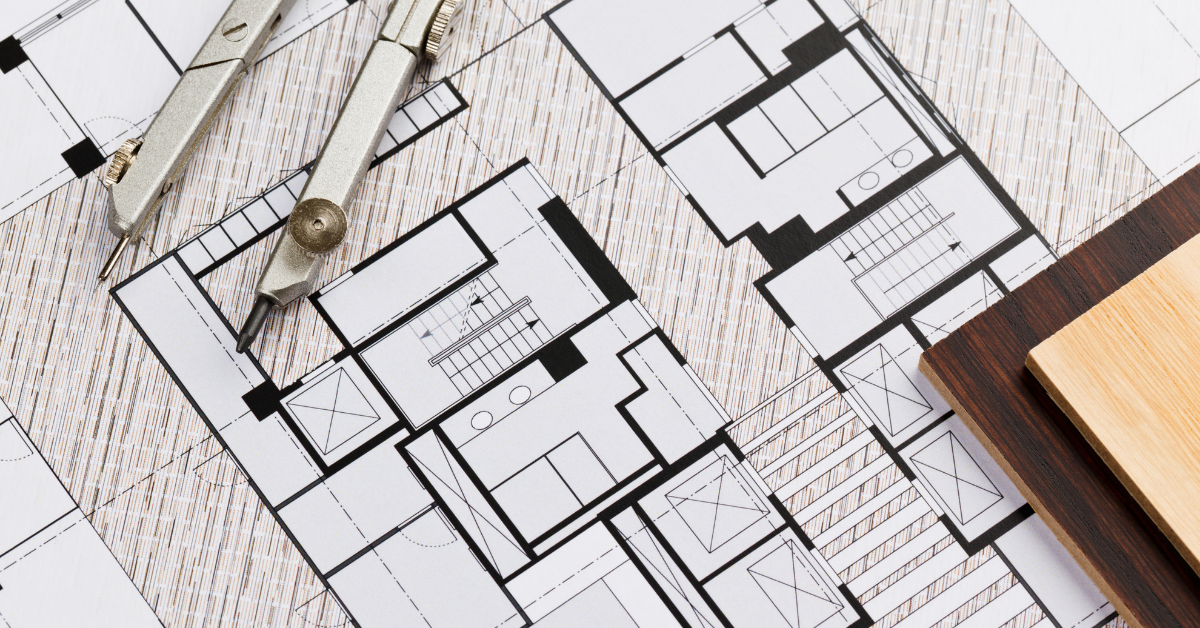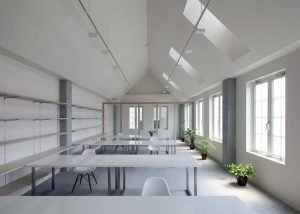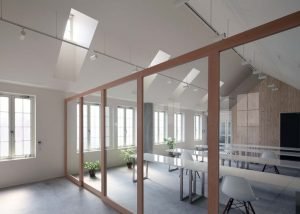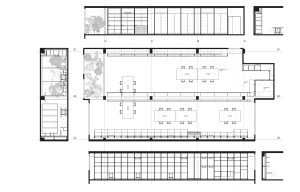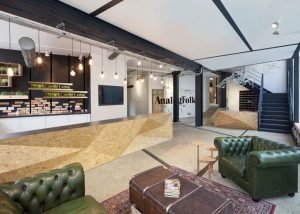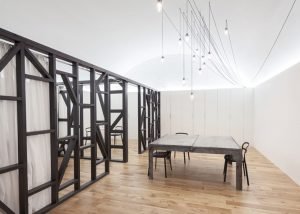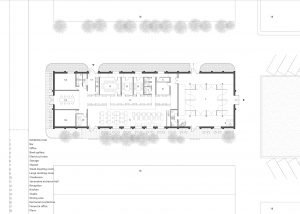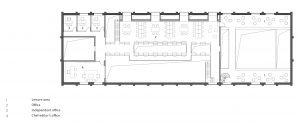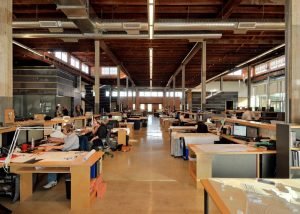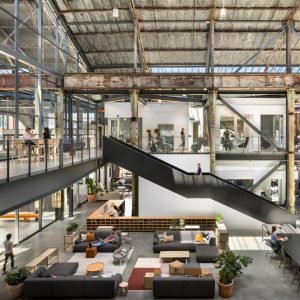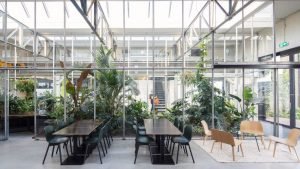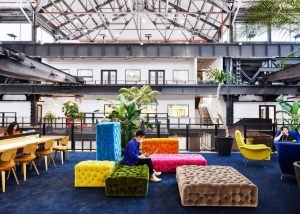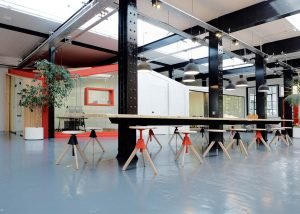Why Office Layout is Important
In order for an office layout to be considered as being conducive for productivity, it needs to have a balance between private and collaborative spaces. This will allow employees to choose which environment suits them best depending on what they are working on.
In recent years, more and more companies have been converting old buildings into modern office spaces, storefronts, restaurants, homes, and more, usually to take advantage of cheaper rents and more space. Unused warehouses make up a large portion of buildings that are being renovated and repurposed.
Since a warehouse is generally a wide-open, functional space, there are endless ways to turn one into offices. The new layout of the building can be whatever you want it to be, renovating a warehouse is like starting with an empty shell and creating/filling in the insides to fit its new function, provide comfort, and create a cohesive modern space.
Important Considerations When Designing a Warehouse Office Building
When you are contracted to design and create office spaces within an old warehouse, whether the entire warehouse is being transformed into an office building or an active warehouse just needs space for their administrative staff, there are some important things to consider.
- The size and shape of the space to be designed.
- The number of people who will be working in the space.
- The budget for the project.
- How much customization is desired for furniture, finishes, and other features.
- The style that best suits the business needs and brand personality.
- The type of work that will be conducted within the new space.
- The practical needs of the company and employees.
- Design features that match the company’s brand colors, messaging, and overall company culture.
- Natural light sources – are there existing windows and where do you need to add windows to increase the natural light in the space?
- Practical MEP design needs – where will the bathrooms be located? Will there be a kitchen or kitchenette area or other space that will need running water? Where will artificial lighting be placed? How many outlets and how much electrical output will the company need? How will the space be heated or air conditioned?
These practical and aesthetic requirements of the job should inform your design choices for the space. Below are a few examples of design types you could utilize.
Example Design Style 1: Clean and Simple
The first example of warehouse office designs is a simple and clean look. The materials used are mostly wood and metal. This type of space is often inspired by minimalism and efficiency.
The warehouse is designed to be efficient in terms of space and storage. It also provides a modern look that will attract clients and future employees.
The clean and simple design may use white walls with minimal decoration to make the space feel airy and open while still providing enough storage space for all the company’s needs.
The below images are of an old coffee roasting warehouse that was turned into a collaborative office space by TT Architects in Japan.
Another example is the below image and floor plan of a warehouse-turned-flexible co-working space in Barcelona, created by Appareil for their new office and studio space.
A popular trend in refurbishing old buildings is to use recycled or repurposed materials and objects, as seen in the below warehouse office designs by DH Liberty in London.
Example Design Style 2: Industrial & Creative
Industrial warehouses are not usually known for their beauty. But with some creative thinking and a little ingenuity, they can be turned into something that is both functional and aesthetically pleasing. Creative office space designs have been around for a while now, with some companies going so far as to redesign their buildings from scratch when they move in. These spaces are well known to make employees happier and more productive as the latest research has shown that they help to cultivate a culture of innovation, collaboration, and creativity among all staff members.
The below images are of a large warehouse in Beijing that was converted into the new home of Lens Magazine by Trace Architecture Office (TAO).
Another example of industrial warehouse office design is the below converted warehouse by Overland Partners in San Antonio, Texas.
The next example uses a two-story design and features some of the original warehouse equipment and structure as part of the industrial design. A Berkley, CA-based firm, Marcy Wong Donn Logan Architects were in charge of the project.
A creative design may include features that you wouldn’t expect to see in a typical office building. For example, the below pictures are of a warehouse space converted into offices by Space Encounters, a Dutch architecture firm. The design includes greenhouses that can double as meeting spaces.
Example Design Style 3: Contemporary & Colorful
The last design style examples combine a contemporary office feel with pops of color for a relaxed and creative space.
The below offices were created from an abandoned Brooklyn, NY warehouse by Macro Sea and Marvel Architects.
Another example of a contemporary office design utilizing pops of color is the warehouse-turned-offices by ARRO Studio in Paris.
Designing Corporate Offices in Warehouses
As the need for space continues to grow, many companies are turning to warehouses as a cost-effective option. Warehouses are perfect for office spaces because they come with a lot of open and flexible floor plan options. This is especially useful for companies that have a lot of different teams working together.
Designing warehouse office spaces can be challenging, but there are many creative ways to make it work. For example, you can use furniture that is made out of recycled materials and only use colors and patterns that reflect the company’s values.
For your MEP Design Needs
An important aspect of any architectural design is MEP design and engineering. Pro Engineering provides the MEP design and engineering for commercial projects. Pro Engineering provides these services to architects, designers, and contractors in the greater San Diego and Orange County area.
Contact Pro Engineering Consulting today and get a head start on your next project.



